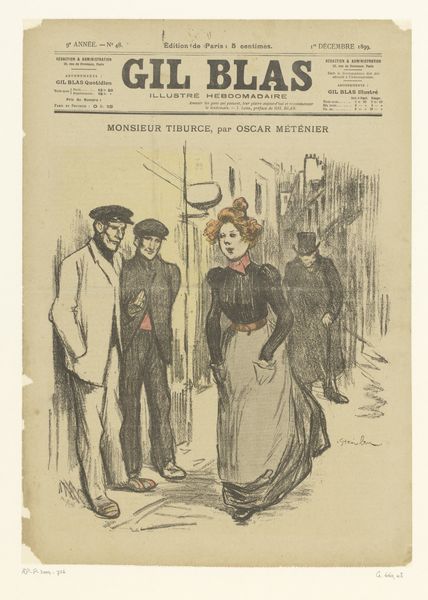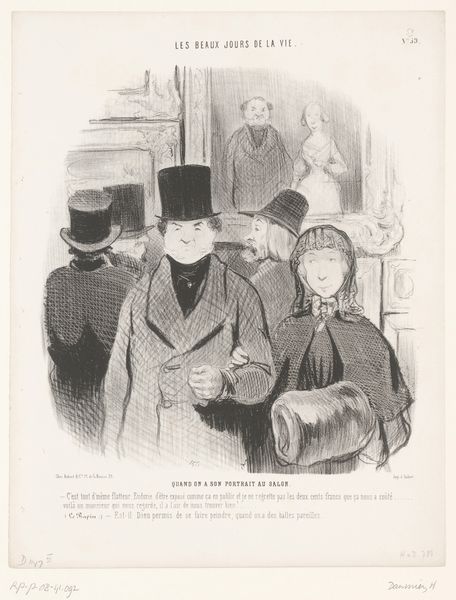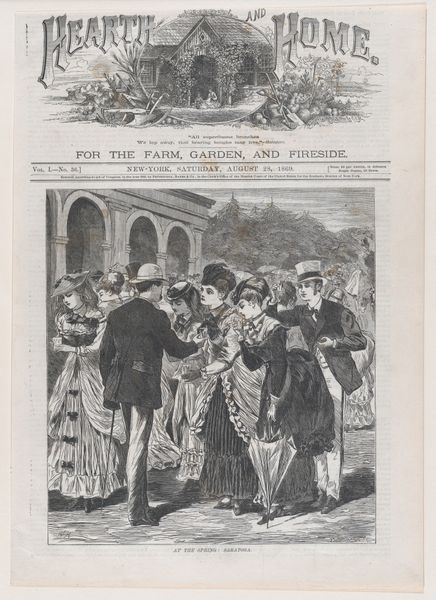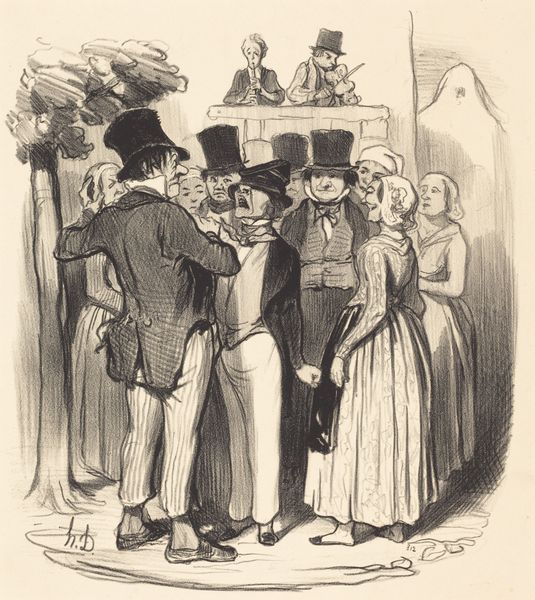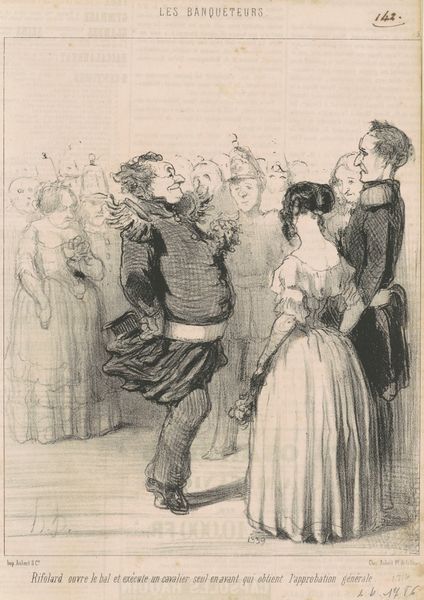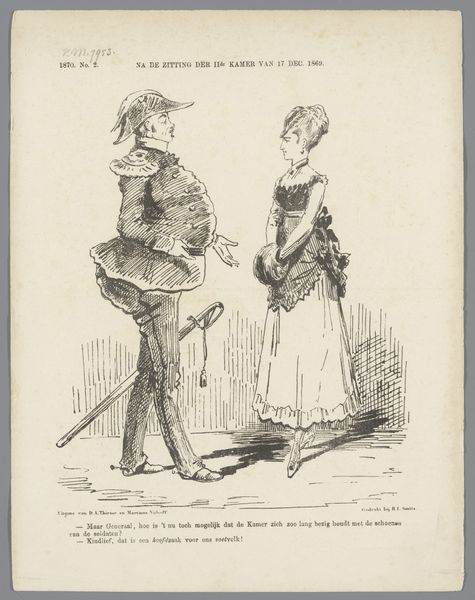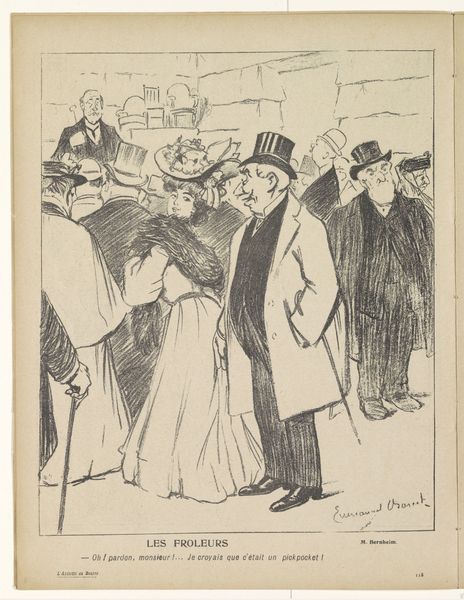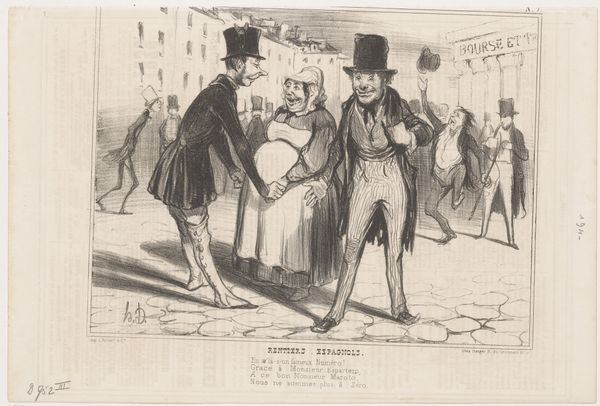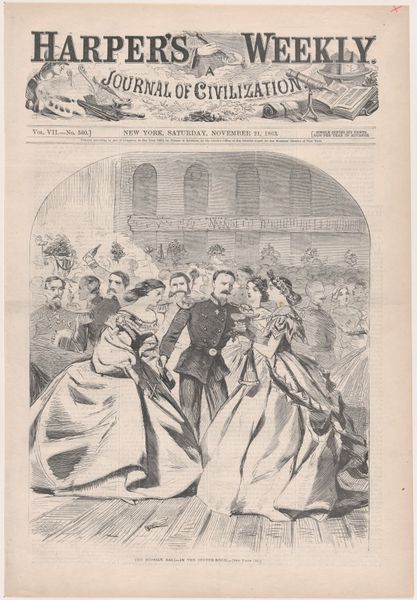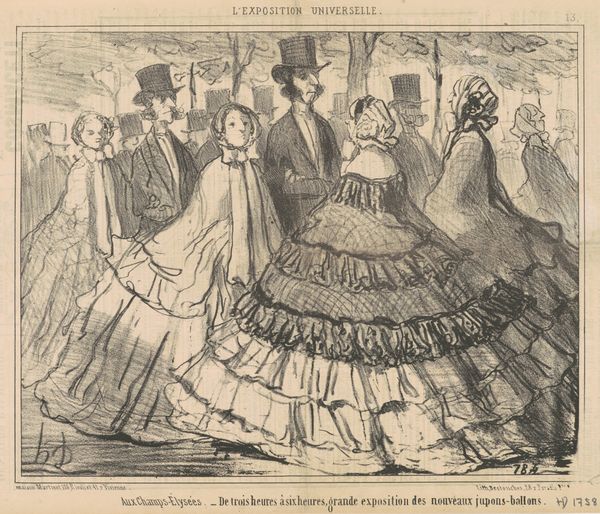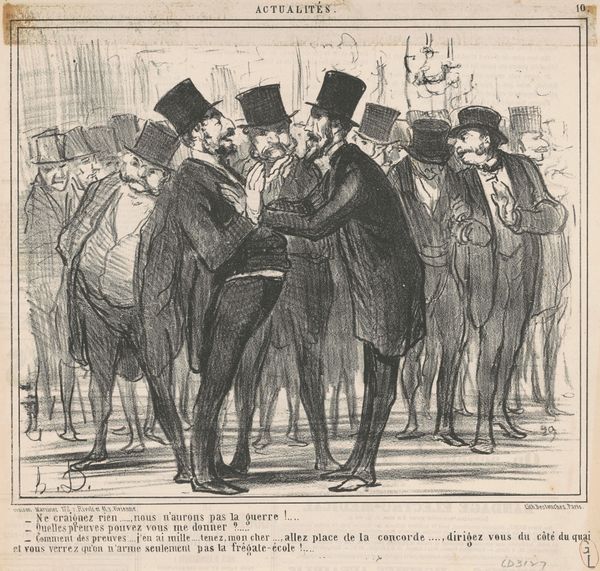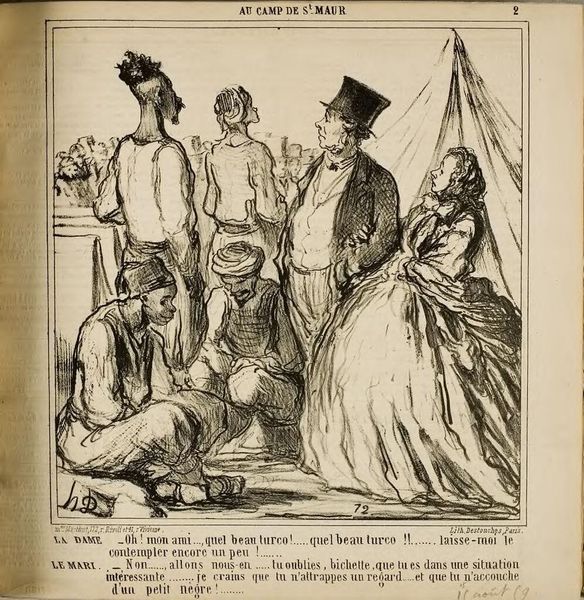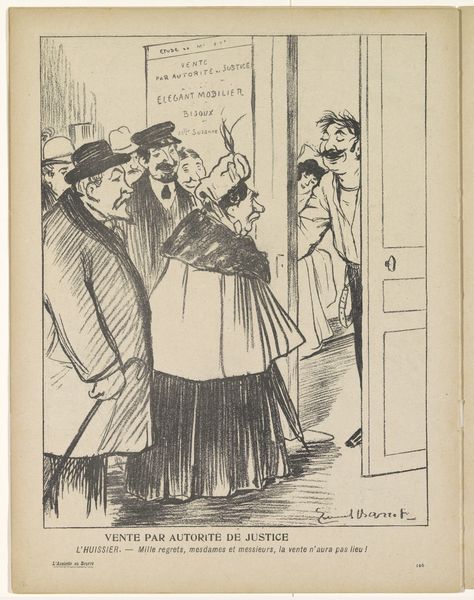
Gil Blas, Illustré Hebdomadaire, 25 Mai 1900, 10e année, No. 21 : La Jouissance du danger, (...) 1900
0:00
0:00
drawing, lithograph, print, graphite, pen
#
portrait
#
drawing
#
art-nouveau
#
lithograph
# print
#
cartoon sketch
#
symbolism
#
graphite
#
pen
#
cityscape
Dimensions: height 383 mm, width 282 mm
Copyright: Rijks Museum: Open Domain
Curator: I find myself drawn into the mood of subtle defiance emanating from this image. There’s a kind of somber determination. Editor: Indeed. This is a lithograph, likely also with graphite and pen work, by Théophile Alexandre Steinlen, the cover for the May 25th, 1900 edition of Gil Blas Illustré. It's titled “La Jouissance du danger,” or “The Enjoyment of Danger”. Given that Gil Blas was a weekly satirical magazine, Steinlen captures something more profound than mere satire. Curator: Absolutely. Look at how the gazes intersect. The women’s elaborate attire hints at bourgeois aspirations, yet their expressions challenge the viewer, particularly the central figure on the left. She is looking away, almost defiant. Considering the constraints placed upon women during this period, this figure's direct, confident gaze challenges patriarchal expectations. It's interesting how the work implies that the "jouissance du danger" stems not just from risky behavior but from asserting one's presence. Editor: Yes, it invites interpretation beyond the literal depiction of elegant ladies. The image operates on the precipice of several socio-political tensions. The title also suggests an engagement with philosophical ideas prevalent in the late 19th and early 20th centuries regarding decadence and the thrill of transgression against established social norms. There is an overwhelming tension here, not least created by the contrast between light colors and shading. Curator: Precisely. This echoes Symbolist sensibilities, and it brings into play contemporary debates around class and gender that really give an opportunity to dig into social hierarchies and individual resistance at that time. Even the limited color palette is potent – it emphasizes this idea that there are many boundaries. Editor: The lithographic medium lends itself to the mass dissemination of such images. We should consider Steinlen’s work within the context of Parisian print culture at the time and in terms of who would have seen it, and why it made an impression. Curator: Exactly, it is not merely about seeing; it's about critically observing. To ponder these images as social commentary demands acknowledging the complex intersectional aspects of class, gender, and emerging social dynamics during this period. Editor: And it pushes us to rethink our expectations about images. To look again at what's there, and what's left unsaid.
Comments
No comments
Be the first to comment and join the conversation on the ultimate creative platform.
